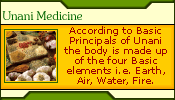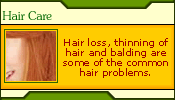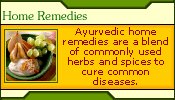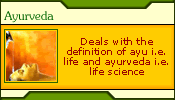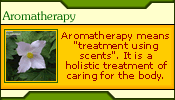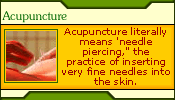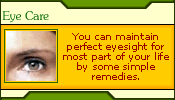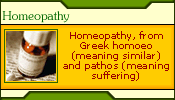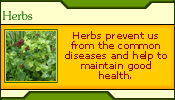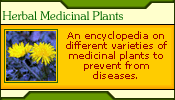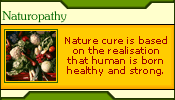|
A correct and balanced diet is essential during the treatment of
diseases through chromotherapy. The patients should take food items
with analogous colouring. The various colours contained in different
food items are :
Red : Beets, radish, red cabbage,
tomatoes, watercress, most red-skinned fruits,red berries and water
melon.
Orange : Orange-skinned vegetables
and fruits such as carrot, orange, apricot, mango, peach and pappaya.
Violet : Egg plant, berries,
black carrot and purple grapes.
Yellow : Lime and lemon, sweet
lime, grapes, pumpkin, melon, banana, mango, yellow apple and guava.
Purple : Foods having both blue
and violet colouring.
Green : Most of the green vegetables
and fruits such as gourds, spinach, plantain, lettuce, pea, green
mango, gooseberry, pears, beans , etc.
Blue : Blue plum, blue beans,
blue grapes, etc.
Nearly all fruits and vegetables are low-fat and contain fiber
and natural chemicals known as phytonutrients that can help protect
against heart disease, cancer and age-related cognitive decline,
cataracts and macular degeneration.
Government health experts say that people should get a minimum
five servings a day of fresh produce. Currently it's estimated about
a third of the population fulfils that requirement, and it may be
as high as 80% that do not get enough servings. As many as 50 percent
of Americans don't eat a piece of fruit all day long. Nine servings
are optimal for health maintenance.
"What Color Is Your Diet?" provides a color guide to
fruits and vegetables and their benefits, as well as recipes to
encourage an increased intake of produce. Heber says that counting
servings may not be adequate if you are missing out on one or more
major color categories. Not all members of the fruit and vegetable
group are alike.
They have unique properties that provide combinations of substances
with unique effects on human biology. Therefore, simply eating five
servings a day of fruits and vegetables will not guarantee that
you are eating enough of the different substances needed to stimulate
the metabolic pathways of genes in the different organs where fruits
and vegetables have their beneficial effects.
The colors represent 25,000 chemicals that are beneficial. There
is evidence that interaction between the colors provides benefits,
so it's important to have a diverse diet and eat different foods.
We normally eat three color groups on average in this country. Heber
believes in evolutionary terms, man started out on a plant-based
diet.
Fruits and vegetables are historically and biologically important.
Our ancestors the hunter-gatherers ate over 800 varieties. The different
colors represent families of compounds, and we have even selectively
bred the colors we eat into an even narrower range. There are red
carrots in India, we eat orange ones. There are 150 varieties of
sweet peas, but only a few are available to us. We need to make
an extra effort to eat many different foods to get the full range
of benefits, he says
Heber groups produce into seven color categories:
Red Group
(tomatoes, can of V8 juice, pink grapefruit, watermelon)
These contain the carotenoid lycopene, which helps rid the body
of free radicals that damage genes. Lycopene seems to protect against
prostate cancer as well as heart and lung disease. Processed juices
contain a lot of the beneficial ingredients. One glass of tomato
juice gives you 50 percent of the recommended lycopene.
Yellow/Green Group
(spinach greens, collard greens, mustard greens, turnip greens,
yellow corn, green peas, avocado, honeydew melon)
These are sources of the carotenoids lutein and zeaxanthin. These
are believed to reduce the risk of cataracts and age-related macular
degeneration. Lutein is a yellow-green substance that concentrates
in the back of your eye. It may also reduce atherosclerosis.
Orange Group
(carrots, mangos, apricots, cantaloupes, pumpkin, acorn squash,
winter squash, sweet potatoes)
These contain alpha carotene, which protects against cancer. They
also contain beta-carotene, which the body converts to vitamin A.
It protects the skin against free-radical damage and helps repair
damaged DNA. Beta-carotene is also good for night vision. It's important
to note that these beneficial nutrients can be received from other
foods, too. For instance vitamin is found in dairy products and
meat. But it's not as beneficial because you get high calories and
fat along with it.
Orange/Yellow Group
(pineapple, orange juice, oranges, tangerines, peaches, papayas,
nectarines)
These contain beta cryptothanxin, which helps cells in the body
communicate and may help prevent heart disease. Also, an orange
contains 170 percent of the recommended daily vitamin C. It's interesting
to note that the skin of an orange is high in a protective fat that
has been found to kill cancer cells in humans and animals, which
highlights the fact that two-thirds of all drugs come from the plant
world.
Red/Purple Group
(beets, eggplant, purple grapes, red wine, grape juice, prunes,
cranberries, blueberries, blackberries, strawberries, red apples)
These are loaded with powerful antioxidants called anthocyanins
believed to protect against heart disease by preventing blood clots.
They may also delay the aging of cells in the body. There is some
evidence they may help delay the onset of Alzheimer's disease.
Green Group
(broccoli, brussels sprouts, cabbage, Chinese cabbage or bok choi,
kale)
These contain the chemicals sulforaphane and isocyanate and they
also contain indoles, all of which help ward off cancer by inhibiting
carcinogens. It's a fact that ten percent of the population - like
George Bush Sr. - doesn't like broccoli. But it is important in
diets because of the beneficial chemicals it contains.
White/Green Group
(leeks, scallions, garlic, onions, celery, pears, white wine, endive,
chives)
The onion family contains allicin, which has antitumor properties.
Other foods in this group contain antioxidant flavonoids like quercetin
and kaempferol.
|



